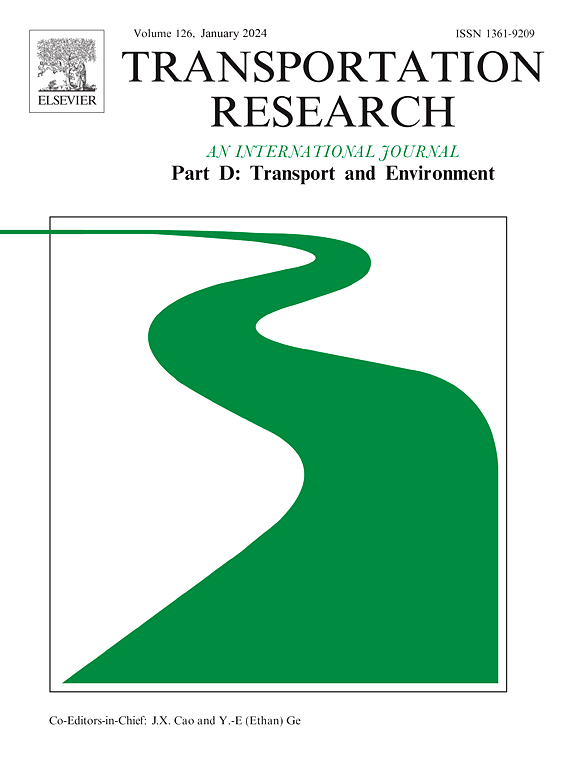Driving factors and interactions of urban transportation carbon emissions: A case study of China
IF 7.3
1区 工程技术
Q1 ENVIRONMENTAL STUDIES
Transportation Research Part D-transport and Environment
Pub Date : 2025-04-14
DOI:10.1016/j.trd.2025.104740
引用次数: 0
Abstract
Regional disparities among different types of cities pose significant challenges to reducing carbon emissions from urban transportation. This research classifies cities into six categories and examines the factors driving urban transportation carbon emissions, along with their interactions, using the Geographical Detector Model (GDM) and the Logarithmic Mean Divisia Index (LMDI). Building on this foundation, a novel decoupling effort model is developed to assess the contributions of each driving factor to the decoupling process. The findings highlight that economic growth is a major driver of emissions in large cities like Shanghai and Chengdu, while industrial structure plays a key role in large coastal cities such as Yantai. In contrast, urban public transportation participation and carrying capacity are pivotal factors in large inland cities like Shijiazhuang and medium-sized cities like Sanya and Jinhua. Notably, the study reveals a post-2016 challenge in balancing public transportation engagement and carrying capacity, emphasizing the need for tailored low-carbon policies in urban transport planning. These insights provide valuable guidance for cities worldwide facing similar transportation carbon emission challenges, offering a framework for more context-specific and effective carbon reduction strategies.
城市交通碳排放驱动因素及相互作用——以中国为例
不同类型城市之间的区域差异对减少城市交通碳排放构成了重大挑战。本研究利用地理探测器模型(GDM)和对数平均分割指数(LMDI),将城市划分为六类,并考察了城市交通碳排放的驱动因素及其相互作用。在此基础上,建立了一个新的解耦努力模型来评估每个驱动因素对解耦过程的贡献。研究结果强调,在上海和成都等大城市,经济增长是排放的主要驱动因素,而在烟台等沿海大城市,产业结构起着关键作用。而在石家庄等内陆大城市和三亚、金华等中等城市,城市公共交通参与和承载能力是关键因素。值得注意的是,该研究揭示了2016年后在平衡公共交通参与和承载能力方面的挑战,强调需要在城市交通规划中制定量身定制的低碳政策。这些见解为全球面临类似交通碳排放挑战的城市提供了有价值的指导,为更具体、更有效的碳减排战略提供了框架。
本文章由计算机程序翻译,如有差异,请以英文原文为准。
求助全文
约1分钟内获得全文
求助全文
来源期刊
CiteScore
14.40
自引率
9.20%
发文量
314
审稿时长
39 days
期刊介绍:
Transportation Research Part D: Transport and Environment focuses on original research exploring the environmental impacts of transportation, policy responses to these impacts, and their implications for transportation system design, planning, and management. The journal comprehensively covers the interaction between transportation and the environment, ranging from local effects on specific geographical areas to global implications such as natural resource depletion and atmospheric pollution.
We welcome research papers across all transportation modes, including maritime, air, and land transportation, assessing their environmental impacts broadly. Papers addressing both mobile aspects and transportation infrastructure are considered. The journal prioritizes empirical findings and policy responses of regulatory, planning, technical, or fiscal nature. Articles are policy-driven, accessible, and applicable to readers from diverse disciplines, emphasizing relevance and practicality. We encourage interdisciplinary submissions and welcome contributions from economically developing and advanced countries alike, reflecting our international orientation.

 求助内容:
求助内容: 应助结果提醒方式:
应助结果提醒方式:


